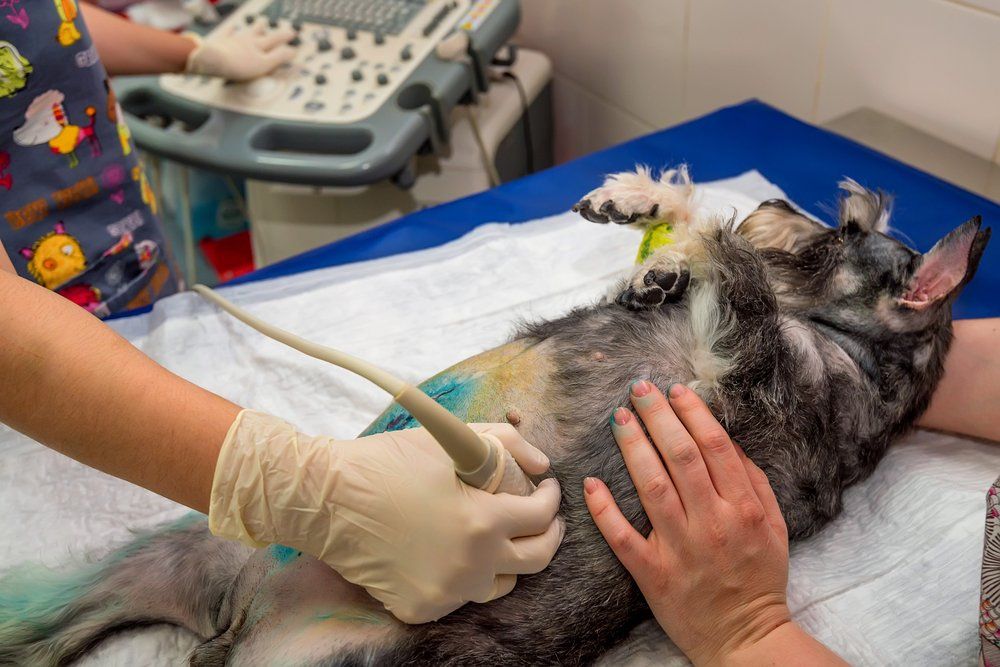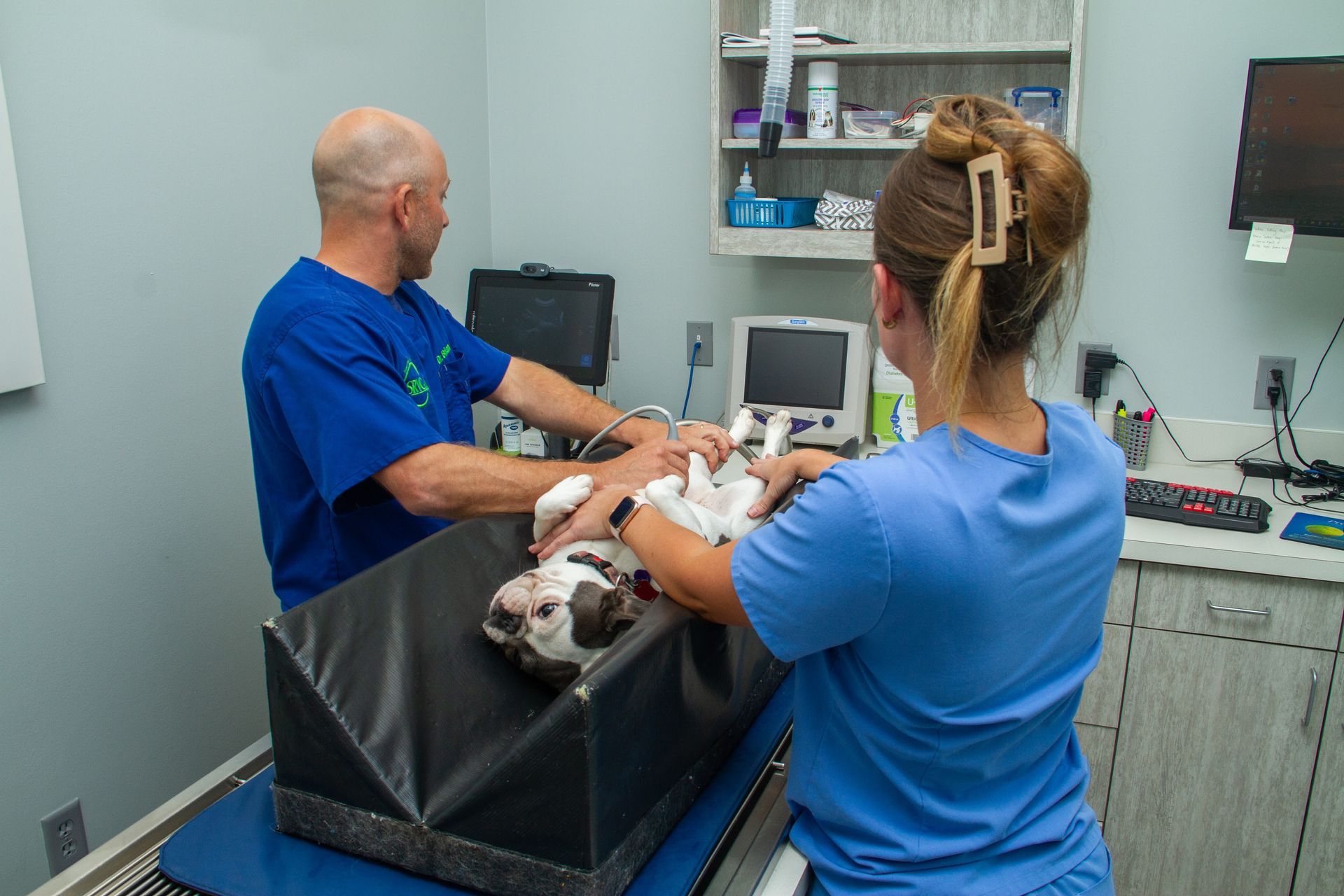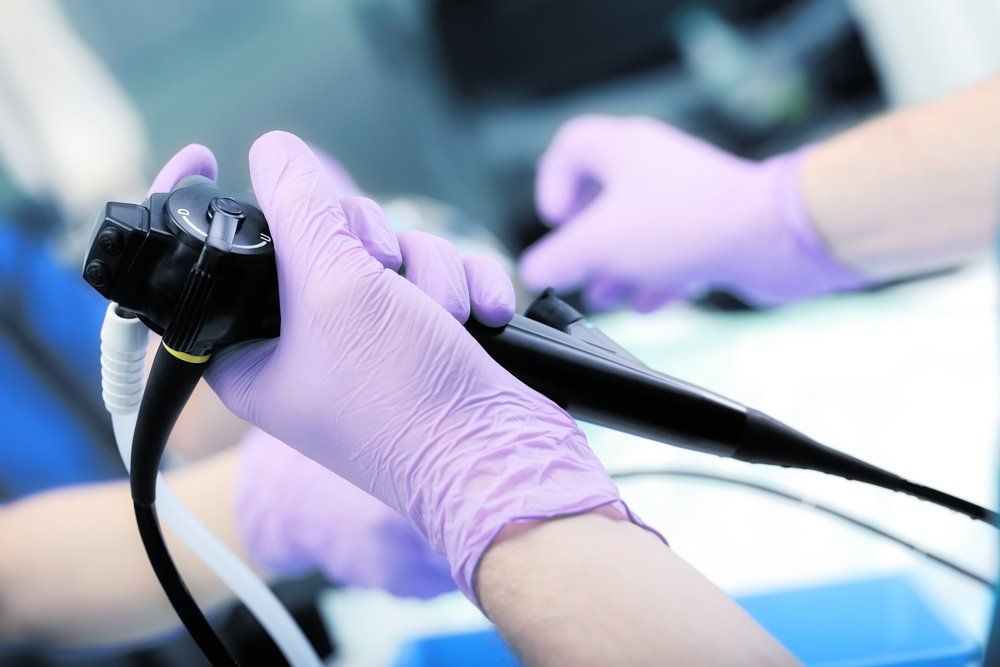Ultrasound

Diagnostic Ultrasound
Although humans and animals are different in many ways, some advances in human medicine are also very useful for veterinary patients. One of these advances, diagnostic ultrasound, has proven to be a powerful tool in veterinary medicine. As a practice, one of our goals is to offer state-of-the-art medicine and diagnostic testing, so we are pleased to offer ultrasound services as a means of providing a higher level of quality care to our patients.
Ultrasonography
Ultrasonography is a type of diagnostic technique that uses ultrasound waves to produce an imaging study. This means that when we perform ultrasonography, we can see internal images of the patient’s body. Unlike some imaging studies, like X-rays, ultrasonography does not use radiation. Instead, ultrasonography uses high-frequency sound (ultrasound) waves to create a picture of what is inside of your pet’s body. Ultrasonography is a completely non-invasive, painless way to diagnose and evaluate many common diseases.
Evaluate the Heart
The machine is connected to a small probe that is held gently against your pet’s skin. The probe sends out painless ultrasound waves that bounce off of structures (for example, organs) in your pet’s body and return to a sensor inside the ultrasound machine. The ultrasound equipment collects these reflected “echoes” and uses them to generate images that are viewable on a screen. Ultrasound waves can provide excellent images of abdominal organs, including the liver, spleen, gallbladder and kidneys. It is also useful for assessing fetal health and monitoring pregnancy in breeding animals, and it can help us diagnose and determine the stage of some forms of cancer.
Because ultrasound images are produced in real time, this technology can be used to evaluate the heart as it beats. This can help us detect abnormalities in the motion of the heart valves, blood flow through the heart, and contractions of the heart muscle. It can also be used to assess the heart for defects. As we strive to provide our patients with the highest quality medicine and diagnostic testing, we are pleased to offer ultrasound as one of our diagnostic capabilities.

What Our Clients Say
C. Mayfield
I have seen a lot of changes since I have been a client at Shackleford Veterinarian Clinic since 1996. The best change of all was when Dr. Barron started. You will not find a better veterinarian or staff!
Tiffany Williams
SRVC answered all of my questions and even allowed me to come back after my appointment to update and add information to my pet's health certificate. I would highly recommend this vet to anyone. They go above and beyond expectation.
Ashley Hurst
I will forever be thankful that Dr. Barron was recommended by my neighbor! My pets have been treated at several different veterinary clinics, but no one
has ever compared to Dr. Barron. The front desk staff and vet techs could not be kinder!

Endoscopy
As medicine has advanced for humans, many of the techniques used have been successfully transferred to pets as well. As a diagnostic and therapeutic tool, endoscopy veterinary procedures have been groundbreaking in the treatment and care of pets. At SRVC, we are dedicated to providing our patients with the latest in state-of-the-art procedures, diagnostic testing and medicine. As a result, we are pleased and proud to provide endoscopy for pets.
Endoscopy for Pets in Little Rock
A number of conditions could prompt our staff at SRVC to suggest the use of endoscopy veterinary procedures as a method of providing treatment for your pet. Sometimes, your pet’s condition could be better diagnosed by examining the internal organs or by obtaining a tissue biopsy. In other cases, our veterinary staff could use an endoscope as a method of further exploration when test results such as blood work, X-rays or ultrasounds are normal but there’s still an issue.
Advantages of Using Endoscopy
Biopsies and examination of the gastrointestinal tract are typically obtained in one of three ways: abdominal surgery, during a laparoscopic procedure or via endoscopy. Because both abdominal surgery and laparoscopy require surgical incisions, endoscopy is the least invasive of these three procedures. During the endoscopy, your pet is given general anesthesia. A flexible tube with a small light and camera at the end are then inserted through your pet’s mouth. The veterinary staff controls the movements of this instrument very precisely by carefully manipulating a control knob.
Results of Endoscopic Procedures
Using endoscopy provides our staff and veterinary doctors with a full-color picture of the area that is being examined. This magnified view helps our highly trained doctors to examine the area to obtain a more accurate diagnosis that can then be used to better treat your pet. In some cases, a small pair of biopsy forceps is used to obtain tiny tissue samples that can be examined more closely and undergo further testing if necessary.
At SRVC, our focus is providing you and your pet with the finest in diagnostic and treatment options. We are proud to offer state-of-the-art options such as endoscopy for our Little Rock patients. If you have questions or concerns about endoscopy — or any of the other services we provide — we encourage you to contact us today.




